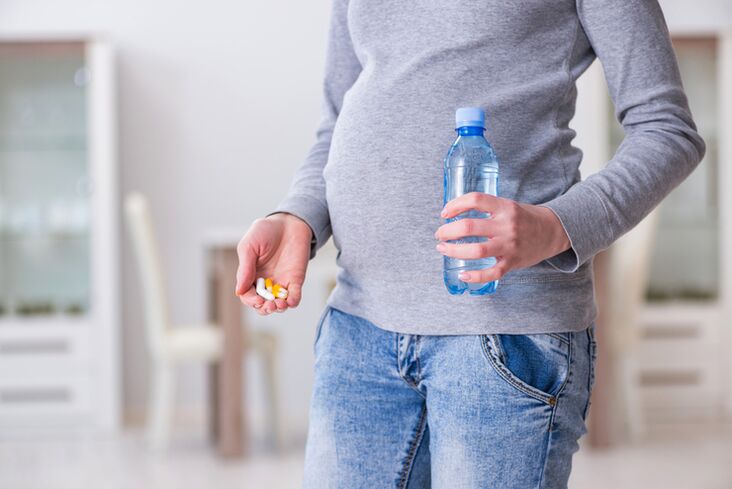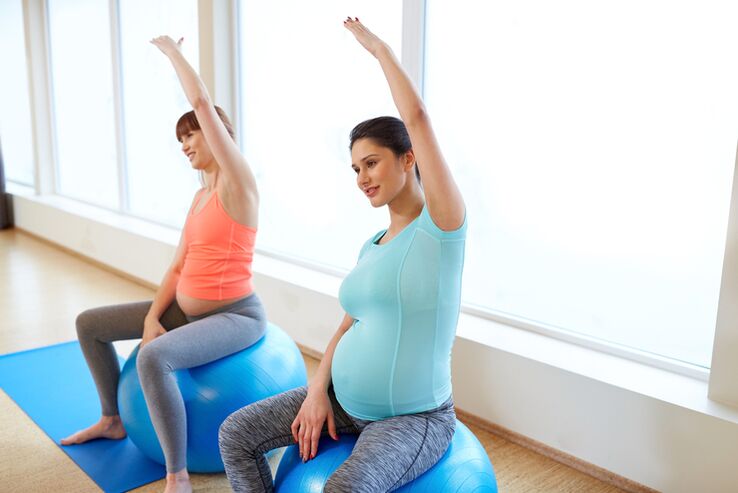
The varicose veins of the small pelves in women are characterized by their diameter increase and incantability.Most of the time, this condition is associated with impaired venous valves.Despite a sufficiently high prevalence, this disease is rarely diagnosed.
This is due to the variety of symptoms, the main one of which is always pain syndrome.It is characteristic of gynecological, neurological and gastrointestinal pathologies.Sometimes the VRVMT is disguised as diseases of the musculoskeletal system in particular, under Rooser syndrome and hip joint arthrosis.
Description and Reasons
The veins extended in the pelvis are not always visualized as they are usually deeply located under the skin.This is one of the reasons for the complexity of the diagnosis.With VRVMT, elasticity and tone of the veins decrease, the blood circulates worse and begins to stagnate.As a result of blocking and swelling of the veins, an obstacle is created for blood exit.
The BRVMT mechanism is based on ovarian veins failure, which is why blood flows backwards and reflux occurs.This leads to an increase in intravenous pressure and blood stagnation, as well as the formation of additional blood circulation circles.
The most important initial factor is dysplasia - connective tissue underdevelopment, which is approximately one third of the population.Dyplasia is a congenital defect in which the level of collagen required for vessel strength is reduced.
In the postmenopausal period, the severity of varicose veins decreases, which indicates in favor of the theory of hormonal influence in the state of the veins.
Significantly defractors venous system tone is capable of progesterone - a female sex hormone, which is also called "pregnancy hormone".On the one hand, it reduces the uterine tone, thus preventing miscarriage and, on the other, weakens the walls of the blood vessels and causes its expansion.The situation is aggravated by the growth of the uterus, which increasingly presses in large veins and causes the formation of deviations of blood flow, collaterals.This is why VRVMT is very common during pregnancy.
The factors of increased risk of varicose veins include the following:
- very high or, inversely, insufficient physical activity;
- multiple;
- Multiple or complex birth;
- Gynecological diseases - endometriosis, fibroid, etc.;
- Long -term steroid hormone intake, including contraceptive.
Types and degrees

The varicose veins in the pelvis are of two types.The first type is called vulva and perineum varicose veins, the second - the pelvic venous infinity syndrome.Both types can develop in isolation or combined with each other, which happens most often.Pregnant women face mainly damage to vulvar veins, which in more than 91% of cases passes independently after delivery.
VRVMT is also classified by origin and location.By origin, varicose veins are divided into primary and secondary.Primary varicose veins develop due to insufficient venous valves.Pregnancy becomes your trigger.Secondary varicose veins are due to system diseases.
According to the location of the VRVMT, it is total when all veins in the pelvis are affected and partial, which selectively affect one or more veins.Depending on the diameter of the veins, 3 degrees of gravity are distinguished:
- 1 tablespoon.- up to ½ cm;
- 2 tablespoons.- 0.6 - 1 cm;
- 3 tablespoons.- More than 1 cm.
Symptoms
Varicose veins symptoms include:
- painful rupture and weight in the lower abdomen;
- an increase in the number of discharge;
- various urination violations;
- A rapid weight gain is already at the beginning of pregnancy.
Pain, as a rule, increases after sexual intercourse, hypothermia, long or standing walk.With damage to the surface veins, veins and a bluish red vascular mesh can appear in the genitals and at the top of the hips.
Often the signs of varicose veins resemble cystitis: painful urination in small portions.
Closer to the end of pregnancy, burning and swelling in the genitals may appear.A similar symptom requires special attention, since the development of inflammation or rupture of the veins that can lead to severe bleeding is not excluded.
What is the dangerous VRVMT
Varicose veins can give various complications that represent a danger to life.First of all, it is thrombophlebitis or thromboembolism - inflammation of dilated veins, leading to the formation of blood clots.If the blood clot - a blood clot - will clog the vessel, the blood supply to the placenta will be blocked.The block result will be fetoplacental failure and fetal hypoxia.
Another serious complication is the threat of abortion and premature birth due to a violation of blood circulation.
Due to expanded veins, doctors can ban origin in a natural way to minimize the risk of vein rupture, threatening internal or uterine bleeding.
Treatment

In pregnant women, drug therapy is limited to taking phytonic and anti -dolids.With pronounced pain, the use of funds from the non -esteroids (NSAIDs) anti -inflammatory drugs is allowed.If there is a threat of oxygen hunger for the child, the treatment is performed in a hospital using anti -hippoxy preparations.
From the fourth month, you can do a flexesklering operation, during which a venosclerosuction agent is introduced into the affected veins.The effect of the procedure is evaluated after 7 days, if necessary, is repeated.Throughout the week after surgery, compression line is required.You can get vein involution in a session, but more often need to perform 3-4 Flexclerosis procedures.
Persistent pain syndrome and a large diameter of advanced veins exceeding 1 cm is an indication for surgical intervention.It can only be performed in the first trimester of pregnancy with soft laser coagulation methods or radio waves.If VRVMT is caused by the uterus retroflexion, plastic surgery will be performed in uterine ligaments.
Doctors advise pregnant women with diagnosed varicose veins of the small pelvis and exercising that prevent blood stagnation in the pelvis.Using a dressing and compression diet will help to decrease VRVMT progression.
The menu should be done in such a way that it mainly contains plant foods, as well as sufficiently volume fermented dairy products and cereals.
A good effect gives the ascending contrast, or perineal shower.During the procedure, a woman sit in a special seat in the form of a ring, the water is supplied from low and directed to the groin.The duration of the procedure is 3-5 minutes, the course of treatment includes 15 to 20 sessions.
Development prevention and varicose vein progress is mainly reduced to optimize motor activity and nutrition.The most important thing is to exclude long -term static and dynamic loads, and adjust the diet, introduce more fruits and vegetables into the diet.In the early stages of varicose veins, exercise therapy and respiratory gymnastics, using mesh compression products.


















